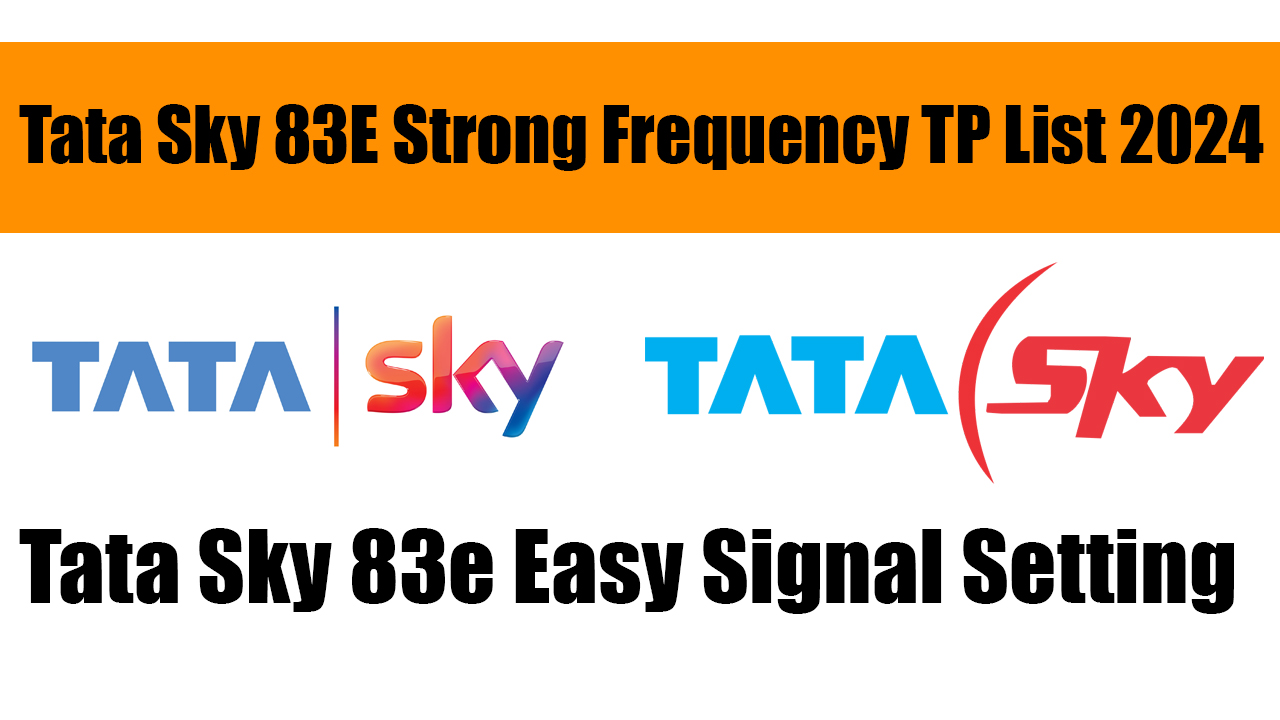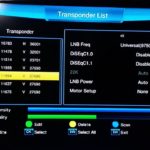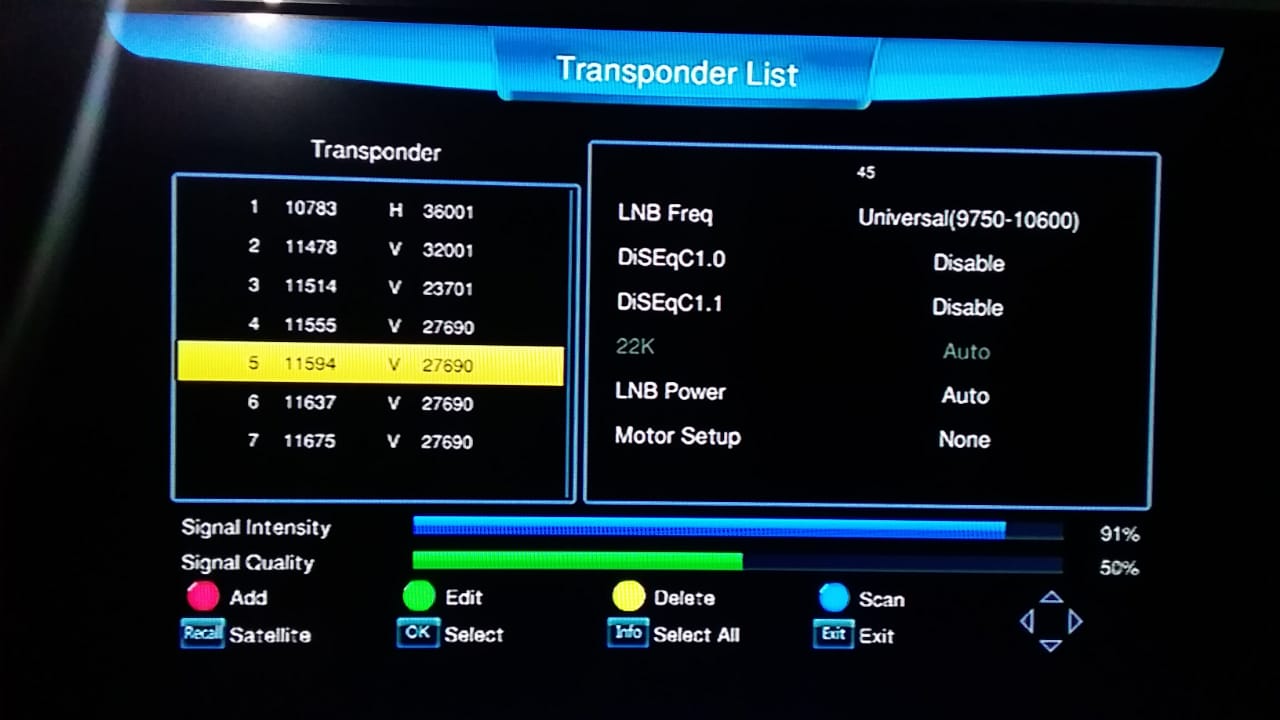In-Depth Guide to Tata Sky 83E Strong Frequency TP List
Satellite television has become an integral part of home entertainment, providing a diverse array of channels with high-quality reception. Tata Sky, one of the leading Direct-to-Home (DTH) service providers in India, delivers an extensive range of channels via its satellite positioned at 83 degrees East (83E). This comprehensive guide will explore the Tata Sky 83E strong frequency transponder (TP) list, offering detailed insights to enhance your viewing experience.
S2CCcam Panel HD Cline Reseller Panel Multiple Satellites Sky Uk CCcam HotBird SkyNet VideoCon Airtel Dishtv TATA SKY 83E CCcam Server
You may also be interested in Dump/Flash Files of China Receivers Free Download.
Understanding the Basics: Satellite TV and Transponders
To fully grasp the significance of the TP list, it’s essential to understand the basics of satellite TV. DTH services broadcast television signals through satellites stationed in geostationary orbit around the Earth. These satellites receive signals from ground stations and transmit them to satellite dishes installed at users’ locations. A set-top box connected to the dish decodes these signals into TV content.
Satellites are equipped with multiple transponders, which are devices that receive, amplify, and retransmit signals. Each transponder operates on a specific frequency and can carry multiple channels. The collection of these frequencies is referred to as a TP list, critical for channel scanning and signal optimization.
Tata Sky and Its Satellite at 83E
Tata Sky utilizes the GSAT-10 and GSAT-30 satellites, positioned at 83 degrees East longitude, to broadcast its channels across India. The 83E location is pivotal for aligning satellite dishes to receive the best possible signal quality. Proper alignment ensures uninterrupted viewing with clear pictures and sound.
The Importance of the TP List
The TP list is essentially a map of all the transponders used by a satellite to broadcast channels. Each entry in the TP list includes the transponder’s frequency, symbol rate, and polarization. Having an accurate and updated TP list is crucial for several reasons:
- Channel Scanning: When setting up a new DTH connection or rescanning for channels, the TP list enables the set-top box to locate and store all available channels.
- Signal Optimization: Correct frequency and polarization information ensure that the satellite dish is properly aligned, maximizing signal strength and picture quality.
- Troubleshooting: If channels are missing or signal quality is poor, referring to the TP list can help diagnose and fix the issue.
Detailed Tata Sky 83E TP List
The Tata Sky 83E TP list includes numerous transponders, each carrying a distinct set of channels. Here is an in-depth breakdown of some of the key transponders:
TP 1: Frequency 10970 MHz, Horizontal Polarization
- Frequency: 10970 MHz
- Symbol Rate: 32000 Ksps
- Polarization: Horizontal
- FEC: 5/6
- Channels: Includes a mix of entertainment, news, and sports channels in both standard definition (SD) and high definition (HD).
TP 2: Frequency 11010 MHz, Vertical Polarization
- Frequency: 11010 MHz
- Symbol Rate: 32000 Ksps
- Polarization: Vertical
- FEC: 5/6
- Channels: Primarily regional channels catering to various language audiences across India.
TP 3: Frequency 11050 MHz, Horizontal Polarization
- Frequency: 11050 MHz
- Symbol Rate: 32000 Ksps
- Polarization: Horizontal
- FEC: 5/6
- Channels: A diverse mix of movie channels, music channels, and infotainment.
TP 4: Frequency 11090 MHz, Vertical Polarization
- Frequency: 11090 MHz
- Symbol Rate: 32000 Ksps
- Polarization: Vertical
- FEC: 5/6
- Channels: Sports channels, children’s programming, and additional entertainment options.
How to Update Your TP List on Tata Sky
Updating the TP list on your Tata Sky set-top box is a straightforward process that can enhance your viewing experience. Here’s a step-by-step guide:
- Access the Menu: Press the ‘Menu’ button on your remote control to open the main menu of your set-top box.
- Navigate to Installation: Go to the ‘Installation’ or ‘Settings’ section. This may vary slightly depending on the model of your set-top box.
- Select TP List: In the installation menu, select ‘TP List’ or ‘Transponder List’.
- Edit or Add TP: You can either edit existing transponders or add new ones. Ensure you enter the correct frequency, symbol rate, and polarization.
- Scan for Channels: After updating the TP list, perform a channel scan to ensure all channels are correctly received and stored.
Troubleshooting Common Issues
Even with an updated TP list, you might encounter issues with your satellite TV reception. Here are some common problems and their solutions:
Signal Loss
- Check Dish Alignment: Ensure your satellite dish is correctly aligned to the 83E position. Even slight misalignments can cause signal loss.
- Inspect Cables: Check all cables for any signs of wear or damage. Loose or damaged cables can disrupt the signal.
- Weather Conditions: Heavy rain or storms can temporarily affect signal quality. Wait for the weather to clear and see if the issue persists.
Missing Channels
- Rescan Channels: Perform a fresh channel scan to ensure all available channels are stored.
- Update TP List: Ensure your TP list is up-to-date. Sometimes channels are moved to different transponders.
- Check Subscription: Make sure your subscription is active and includes the missing channels.
Poor Signal Quality
- Signal Strength and Quality: Access the signal strength and quality meters in your set-top box settings. Adjust the dish alignment for optimal results.
- Interference: Ensure there are no obstructions like trees or buildings between your dish and the satellite.
Tips for Optimal Performance
To maintain the optimal performance of your Tata Sky DTH service, consider the following tips:
Regularly Update Your TP List
Satellite operators occasionally change transponder settings or frequencies. Regularly updating your TP list ensures you always have the latest settings for optimal reception.
Routine Maintenance
Periodically check your satellite dish and cabling for any signs of wear and tear. Regular maintenance can prevent potential issues and prolong the life of your equipment.
Use Quality Equipment
Invest in high-quality cables and connectors to ensure the best possible signal transmission. Cheap or inferior components can degrade signal quality.
Keep Your Set-Top Box Software Updated
Ensure your set-top box software is always updated to the latest version. Software updates often include important improvements and bug fixes.
Conclusion
Tata Sky provides a comprehensive DTH service, offering a wide array of channels to viewers across India. The 83E strong frequency TP list is a vital component for ensuring optimal reception and viewing quality. By understanding how to update and maintain this TP list, you can enhance your viewing experience, troubleshoot common issues, and enjoy uninterrupted satellite TV.
Staying informed and regularly checking your TP list will help you get the most out of your Tata Sky service. Whether you are setting up a new connection or optimizing an existing one, the right TP list is your key to a seamless and enjoyable television experience.









